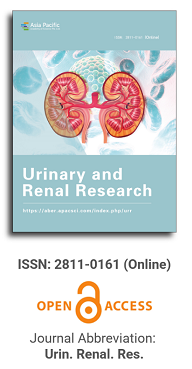
Asia Pacific Academy of Science Pte. Ltd. (APACSCI) specializes in international journal publishing. APACSCI adopts the open access publishing model and provides an important communication bridge for academic groups whose interest fields include engineering, technology, medicine, computer, mathematics, agriculture and forestry, and environment.
Optimization of antibiotic drug regimens to patients with renal dysfunction based on endogenous CLcr and commenting on its rationality
Vol 1, Issue 1, 2020
Download PDF
Abstract
Objective: To optimize the antibiotic drug regimens to patients with renal dysfun-ction based on endogenous creatinine clearance(CLcr) and to comment on its rationality. Methods: Rationality and optimizability of the antimicrobial regimens in a medical record were disscussed via the renal function based on CLcr. The original regimens which were considered to be optimized were adjusted via the renal function based on CLcr, When these adjusted regimens achieved the preset threshold of the PK/PD target index which was used to predict the efficacy of regimens, they were considered to be feasible. Results: In the elected medical record, it was found that the dosage of the original regimens was too high or the interval of administration was too short, which indicated that the original regimens could be optimized. The optimized regimens, obtained by adjustment on the original regimens via the renal function based on CLcr and according to the preset threshold of the PK/PD target index, were theoretically not only effective but also more secure. Conclusion: Based on the renal function status reflected by CLcr, the optimization and commenting of antimicrobial drug administration plan and its rationality are helpful for the development of safe, effective and reasonable individualized treatment plan for patients with renal insufficiency complicated with infection; it can serve as the theoretical guidance in clinical practice.
Keywords
References
- Wang Fu, Zhang YingYuan Practical anti infective therapeutics: 1st edition [M] Beijing: People's Health Publishing House, 2005:155-159202-203282-283400-401
- Yu Qian, Wang Beili, Guo Wei, et al Determination of glomerular filtration rate and its clinical application [J] Laboratory medicine, 2015,30 (7): 674-679
- Goodman, Gilman's. The pharmacological basis of thera-papeutics [M].7th edition, America: McGraw-Hill, 2006, 1792, 1806-1843.
- Huang Shoujian, Li Mingtao, Chen Ruzhu Drug dose adjustment in renal insufficiency [J] New medicine, 2003,34 (12): 761-762
- Frei CR, Wiederhold NP, Burgess DS. Antimicrobial breakpoints for Gram-negative aerobic bacteria based on pharmacokinetic- pharmacodynamic models with Monte Carlo simulation [J]. J Antimicrob Chemother, 2008, 61(3):621-628.
- Vardakas KZ, Kioumis I, Falagas ME. Association of pharmacokinetic and pharmacodynamic aspects of line- zolid with infection outcome [J]. Curr Drug Metab, 2009, 10(1):2-12.
- Rayner CR, Forrest A, Meagher AK, et al. Clinical phar- macodynamics of linezolid in seriously ill patients treated in a compassionate use programme [J]. Clin Pharmacoki- net, 2003, 42(15):1411-1423.
- Piperacillin and tazobactam package insert. Available at: http:// http://www.sagentpharma.com/wp-content/uploads/2017/09/Pip_Taz_PI-v2.pdf. [Accessed on 2018-05-28].
- Clinical and Laboratory Standards Institute (CLSI). M100S PeRFormance Standards for Antimicrobial Sus- ceptibility Testing [S].26th edition, America: PA, 2017, 32-40, 42-44, 56-63.
- Eucast. Antimicrobial Wild Type Distributions of Microor-ganisms. Available at: http://mic.eucast.org/Eucast2/ Search Controller/search. jsp? action=init. [Accessed on 2018.7.28].
Supporting Agencies
Copyright (c) 2020 Chunmao Zheng, An-fa Wang

This work is licensed under a Creative Commons Attribution-NonCommercial 4.0 International License.

This site is licensed under a Creative Commons Attribution 4.0 International License (CC BY 4.0).
.png)
Prof. Wei-Yen Hsu
National Chung Cheng University, Taiwan

